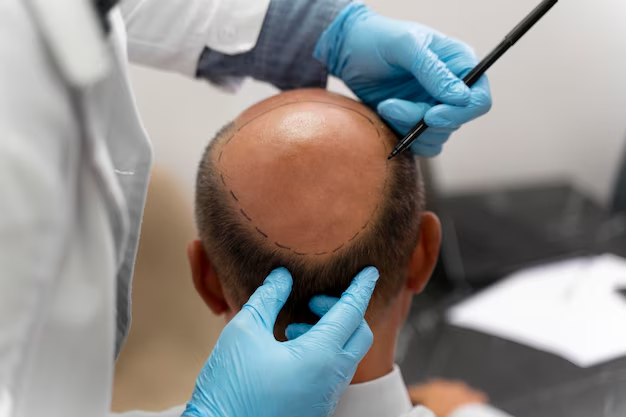
DHI(Direct Hair Implantation)
DHI (Direct Hair Implantation) is an advanced hair restoration technique used to treat hair loss. It is a variation of the FUE (Follicular Unit Extraction) method but with a more precise and streamlined implantation process. In DHI, hair follicles are directly implanted into the scalp using a specialized tool, often resulting in faster recovery and more natural-looking results compared to other techniques.
How DHI Works
Hair Follicle Extraction: Just like FUE, the process starts with the extraction of hair follicles from the donor area (typically the back or sides of the scalp). This is done using a micro-punch tool that causes minimal damage to the follicles.
Direct Implantation: The key difference with DHI is that after the follicles are extracted, they are immediately implanted directly into the recipient area using a Choi Implanter Pen. This pen is a needle-like instrument that allows the surgeon to place the follicles at the correct angle, depth, and direction in one step. The implanter pen also minimizes the need for creating incisions, which reduces trauma to the scalp.
No Need for Channels or Incisions: Unlike traditional FUE, where small incisions are made to create the “channels” for follicle implantation, DHI skips this step and directly implants the hair follicles into the scalp. This reduces the risk of scalp trauma and results in a quicker recovery time.
Advantages of DHI
- Precision: The Choi Implanter Pen allows for precise control over the angle, depth, and direction of hair follicle placement, leading to more natural-looking results.
- Minimal Scarring: DHI is less invasive than traditional hair transplant methods, leading to minimal scarring and faster healing.
- Faster Recovery: The absence of incisions means that the recovery time is typically shorter compared to other hair restoration methods.
- Higher Graft Survival Rate: Since the follicles are implanted immediately after extraction, there is less time for them to be exposed to external factors, which can improve graft survival.
- No Need for Stitches: As there are no incisions made, the need for stitches is eliminated, reducing post-surgical care.
- Less Pain and Discomfort: Due to the minimally invasive nature of the procedure, most patients report less pain during and after the surgery compared to FUT.
Disadvantages of DHI
- Skill-Intensive: The DHI method requires a high level of skill and experience from the surgeon, so choosing an experienced specialist is crucial.
- Longer Procedure Time: DHI can take longer than traditional FUE because of the more meticulous implantation process.
- Cost: DHI is typically more expensive than FUE due to the specialized tools and technique used, as well as the expertise required.
Ideal Candidates for DHI
DHI is suitable for individuals who:
- Are experiencing mild to moderate hair loss.
- Have enough donor hair in the back or sides of the scalp.
- Want a minimally invasive procedure with faster recovery.
- Prefer natural, precise results with minimal scarring.
Procedure Overview
Consultation: A consultation with a qualified specialist is essential to determine whether DHI is right for you. The doctor will assess your hair loss, donor area, and expectations.
Preparation: The donor area is shaved and cleaned, and local anesthesia is applied to ensure the procedure is painless.
Extraction and Implantation: The surgeon extracts hair follicles and immediately implants them into the recipient area using the Choi Implanter Pen.
Post-Procedure Care: After the procedure, there will be some redness or swelling, but these symptoms typically subside within a few days. The transplanted hair will shed initially, but new hair should start growing in 3–4 months, with full results visible in 9–12 months.
Recovery and Aftercare
- Immediate Aftercare: The scalp may be slightly tender, and some mild swelling or redness might occur in the treated areas. It’s important to avoid touching or scratching the scalp.
- Hair Shedding: It’s normal for the transplanted hair to shed within the first 2–4 weeks. New hair will begin to grow back in the treated areas after about 3–4 months.
- Results: Full results typically appear 9–12 months after the procedure
